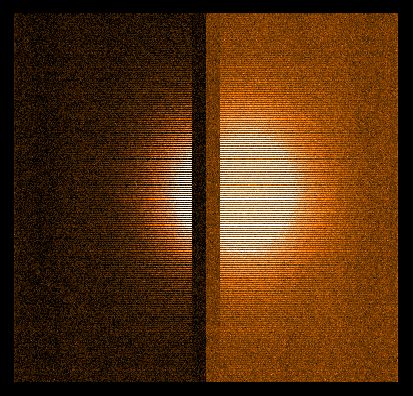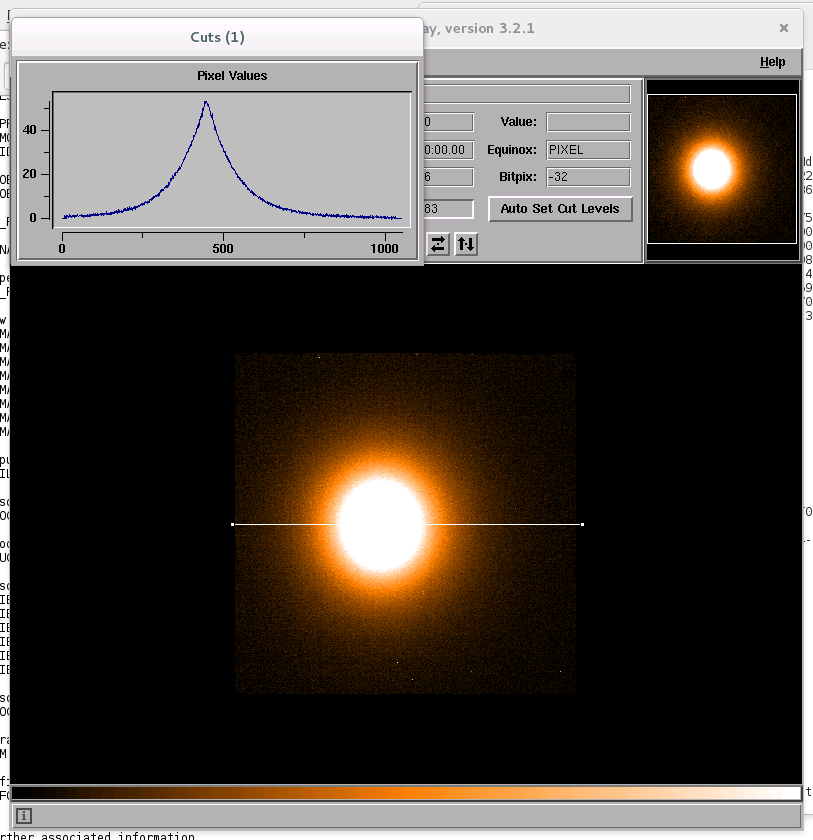SPHERE: ZIMPOL polarimetric standard star
| |
| HC PLOTS |
| absolute deviation of total polarimetry in V, R and I |
 |
| offset in polarimetric angle in V, R and I |
 |
| Strehl ratio of acquired source |
 |
|
QC1 database (advanced users):
browse |
plot
|
The SPHERE calibration plan includes the observations of
- IRDIS CI/DBI: photometric standard stars and astrometric standard stars
- IFS: photometric standard stars and astrometric standard stars
- ZIMPOL-IMG: photometric standard stars and astrometric standard stars
- ZIMPOL-POL: unpolarized and polarized polarimetric standard stars
ZIMPOL unpolarized and polarized standard stars are acquired once a month in polarimetric mode
in three broad band filters, once
with closed loop and once with open loop, but both setups without
coronograph. A further setup parameters are the neutral density filter.
 |
ZIMPOL standard star observation raw frame.
|
 |
ZIMPOL standard star observation.
|
 ZIMPOL polarimetric angle and total polarimetry
ZIMPOL polarimetric angle and total polarimetry
QC1_parameters
| FITS key |
QC1 database: table, name |
definition |
class* |
HC_plot** |
more docu |
| QC.P.OFFSET | sphere_zimpol_stdpol_pol..qc_P_offset | offset from catalogue value | HC |  | [docuSys coming] |
| QC.THETA.OFFSET | sphere_zimpol_stdpol_pol..qc_THETA_offset | offset from catalogue value | HC |  | [docuSys coming] |
*Class: KPI - instrument performance; HC - instrument health; CAL - calibration quality; ENG - engineering parameter
**There might be more than one. |
Trending
Polarimetric standard stars with high and zero polarimetry are acquired regularly in three broad band filters V, N_R and N_I in open loop and closed loop.
The color filter correction is not applied for R and I band.
The measured offsets between the measured and the tabulated total polarimetry
are monitored.
Scoring&thresholds ZIMPOL polarimetric angle and total polarimetry
The values are not scored.
History
- The pipeline recipe to process zimpol poarimetric standard stars was introduced in 2019.
- Residual instrumemtal polarisation derived from highly polarized standard stars show a larger scatter than
that derived from non-polarized standard stars. The cause is not concluded. Several effects are discussed:
The set of used highly polarized standard stars is composed of fainter stars than the set of
non-polarized standard stars. According to Schmid,H.M. et al.'SPHERE/ZIMPOL high resolution polarimetric imager, I. System overview, PSF parameters, coronography and polarimetry', A&A 619, A9, 2018 (page 26/26) some of the highly polarized standard stars may show polarisation variations.
Algorithm ZIMPOL polarimetric angle and total polarimetry
The sky is subtracted via a numerical aperture and the counts are
integrated. From the U and Q Stokes parameters the total polarimetry
P=sqrt(Q^2+U^2) and the polarimetric angle (the angle of maximum
polarisation) THETA = 0.5 arctan(U/Q) is calculated. Both values are
compared with the catalog values of the star, that P_offset = (P_obs -
P_cat ) and THETA_offset = THETA_obs - THETA_cat. For non-polarized standard stars,
P_cat is zero and THETA_cat is not defined.

|
 mirror sites:
PL (internal link)
HQ
[?]
mirror sites:
PL (internal link)
HQ
[?]
 ZIMPOL polarimetric angle and total polarimetry
ZIMPOL polarimetric angle and total polarimetry


